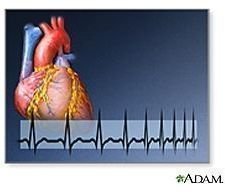Heart Attacks in Women: Causes, Symptoms, and Prevention
Heart Attacks in Women
Early studies on heart attacks were focused mainly on men. Once thought of as a “man’s disease”, heart attacks are now the leading cause of death in both men and women in the United States. It is the leading cause of death in women 65 years of age and older, the second leading cause of death in women aged 45-64 years, and the third leading cause of death in women 25-44 years old.
In the last 30 years, death rates from heart disease have dropped quite a bit; however, death rates in women have not improved as much as they have in men.
Causes
Coronary artery disease (CAD) is the cause of most heart attacks. CAD is the buildup of plaque inside large coronary arteries (arteries that supply oxygen-rich blood to the heart). Plaque, made up of cholesterol, fat, and other substances in the blood, reduces blood flow to the heart. When blood flow is completely blocked to an area of the heart, a heart attack will occur.
Coronary microvascular disease (MVD) is similar to CAD and is being studied as a possible cause of heart attacks in women. Coronary MVD affects the smallest coronary arteries and is believed to be more common in women because of a decrease in estrogen at menopause. This disease is often left unnoticed because it is not detected by standard tests.
Coronary artery spasm, a sudden tightening of a coronary artery, can also block blood flow to the heart. Spasms are temporary but a prolonged episode can cause a heart attack. A coronary artery spasm can occur without a cause or it may be triggered by:
- emotional stress
- exposure to cold
- cigarette smoking
- cocaine use
- alcohol withdrawals
- medications that narrow blood vessels
Symptoms
Men typically experience severe chest pain that runs down one or both arms.
According to Patricia A. Grady, PhD, RN, Director of the National Institute of Nursing Research (NINR), women’s symptoms are not as predictable as men’s. Research by the National Institutes of Health (NIH) found that among 515 women, 95% knew they had new or different symptoms a month or longer before having a heart attack. Fewer than 30% had chest pain prior to their heart attack and 43% had no chest pain during any phase of the heart attack.
Major symptoms of heart attack in women (prior to the heart attack):
- sleep disturbance
- unusual fatigue
- indigestion
- anxiety
- shortness of breath
Major symptoms of heart attack in women (during a heart attack):
- weakness
- dizziness
- unusual fatigue
- cold sweat
- shortness of breath
Prevention
A recent study, published in the British Medical Journal (February 5, 2009), monitored 129,135 postmenopausal women with no history of heart problems for an average of 7.8 years. It was shown that women with a resting heart rate greater than 76 beats per minute (bpm) were more likely to suffer a heart attack than women with a resting heart rate of 62 bpm or less.
The following are major risk factors for heart attacks in women that can be modified, treated, or controlled:
- smoking cigarettes (the risk is 2-4 times that of a non-smoker)
- high blood pressure
- high blood cholesterol
- inactive life style
- being overweight or obese (especially excess fat at the waist)
- diabetes
- stress
- excessive intake of alcohol
- traffic (a recent German study found a strong connection between traffic and heart attacks, believed to be caused by traffic pollution, stress, or both)
Photo Credit
Image courtesy of the National Library of Medicine (NLM)
Disclaimer
Please read this disclaimer regarding the information contained within this article.
